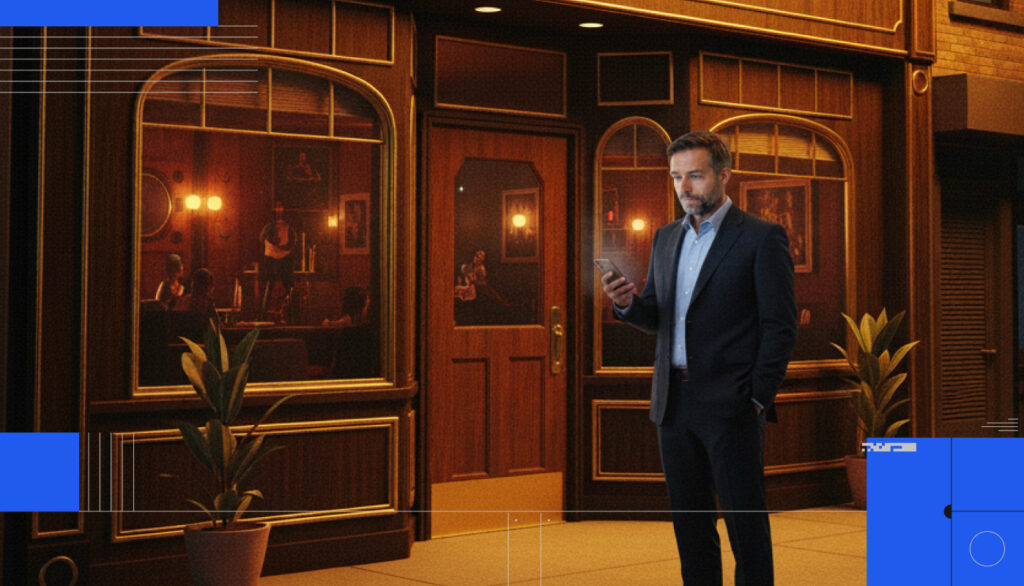When looking to improve your site’s performance, there are two areas that you can turn to. While SEO (search engine optimization) and CRO (conversion rate optimization) focus on two different objectives when trying to improve a website’s overall performance the two go hand-in-hand.

Two Abbreviations Diverge in a Wood
SEO is aimed at increasing the amount of traffic a website receives from organic search results. CRO is focused on ensuring that traffic will complete a specific action, like buying a product or signing up for a weekly newsletter.
While many companies, both large and small, focus solely on either SEO or CRO, making both a focus can help achieve both goals while driving incremental performance on both ends.
In fact, as search algorithms have become more complex, CRO is actually necessary to have a steady impact on SEO and ensure your SEO efforts are not going to waste. What is the use of driving traffic to a site that does not allow its customers to take desired actions?
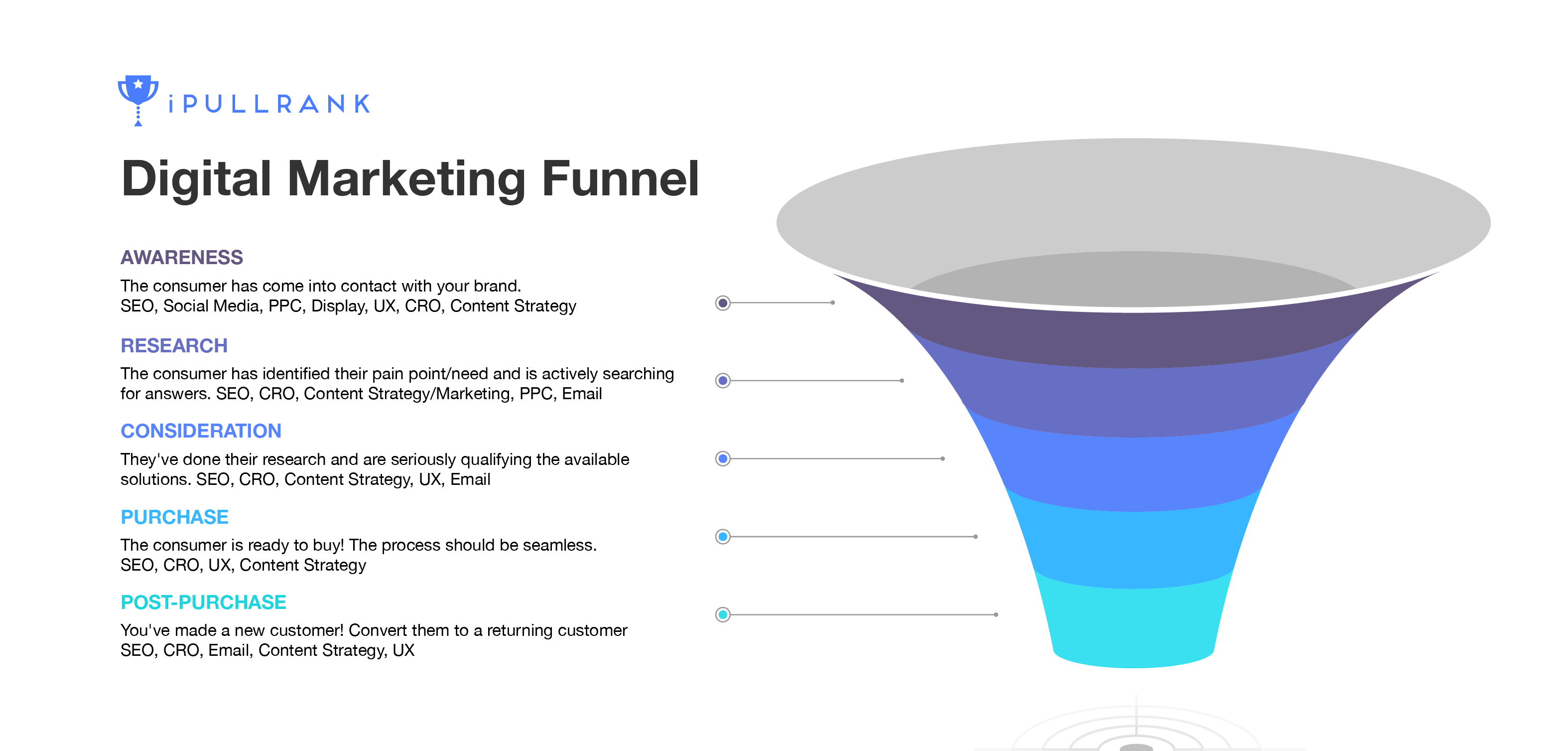
As digital marketers, it is crucial to understand exactly how to tie SEO with your conversion process to ensure the traffic you send takes the right next step and that the process is optimized for them to complete the goal.
Optimizing for Search
In short, SEO is optimizing your site, both the content and technical specifications, to improve its appearance in organic search results. SEO is not static, but rather a dynamic process in which the rules are constantly being updated to better match a search user’s intent. Techniques that would produce high SERP rankings 5 years ago could, in fact, hurt your SEO efforts and cause rankings to drop today. Read more about how Google’s core updates are changing content.
While aspects like meta keywords no longer have any impact on a website’s search query ranking, there are still several content aspects that you should pay close attention to. While these elements are optimized to drive organic traffic they are also a bridge to your CRO efforts (more on that later).
- Title Tags: The clickable blue anchor text found in a search result.
- Meta Descriptions: The description of the webpage is found directly below the title tag on search results.
- Body Content: The on-page copy found on the landing page.
- Term Frequency (TF-IDF): The frequency that a keyword appears on a page (Term Frequency), and how often a keyword appears across all pages (Inverse Document Frequency).
- Linking Anchor Text: The clickable text that leads to an internal or external web page.
Related: 18 Meta Tag Every Webpage Should Have
Additionally, the technical SEO aspects that can help drive your organic visibility include:
- Site Speed: How quickly your site loads when served to a user. If a site loads slowly, you increase the chances of visitors bouncing. According to Google, 5 seconds can increase the chances of a bounce by 90%.
- Rich Snippets: Search results that provide additional information compared to a typical search result.
- Site Security (SSL Security/HTTPS): How secure your website is, whether it has an SSL certificate, and is HTTPS rather than HTTP. A secure site provides a sense of security to users and search engines alike and users are more likely to purchase a product or provide personal information to an HTTPS site rather than an HTTP.
While these elements help to provide search engines with an understanding of your web pages and map that understanding to the right query if you are solely focused on SEO you may be driving qualified traffic to unoptimized landing pages.
What is the use of driving traffic to a site that does not allow its customers to take desired actions?
For example, searchers looking for transactional queries such as “buy baseball bats” and “purchase baseballs” are looking to take the next step once they click from the SERP. If they see listings without the keyphrases or CTAs for them to buy baseball bats, they are likely not to click on the listing or return to the search bar and begin another query.
Optimizing for Conversions
While SEO is focused on driving more traffic to your site, CRO is focused on ensuring that traffic converts to paying customers or that visitors complete a specific action on your site. CRO is about the messaging, user intent, user experience, and general appearance of your website that nurtures the visit through the funnel.
So if the searcher from the above example, looking to buy a baseball bat, lands on a page geared toward the history of baseball bats they are not likely to take an action from that landing page. The proper landing would be the baseball bats category page or potentially a sales landing page advertising any deals on bats.
But let’s say for the sake of example, that said searcher lands on the baseball category page. What they do next is the work of conversion rate optimization.
When optimizing for conversions, there are several marketing tactics you can deploy to find out exactly what needs work.
- A/B Testing: One of the most common CRO tactics to determine the highest possible ROI, A/B testing involves creating multiple versions of a landing page and serving each to a different set of users. The page that produces more conversions is your winner. Some A/B Testing tools include:
- Heat Maps: You can also use tools like CrazyEgg to get an in-depth analysis of the “hot spots” on a page so you can find the best places to leave a call to action, such as a Buy Now button, a contact form, or email opt-in.
- Call to Action: While it may seem obvious, many businesses forget to add a clear call to action to pages of their site, leaving the user confused about what exactly they need to do to complete their process.
Looking at the traffic to your site by channel you can get a clear understanding of how each channel performs. Targeting is available with paid channels like PPC and Display, but for organic traffic, you are literally letting in every potential customer from off the street with no clear idea of what their intentions are.
Keyword intent is a great place to start to develop a strategy to better match searchers with the correct landing pages. Take a look at our Persona-Driven Keyword Research process to learn how to map keyword research to actual buying customers.
Making the Connection Between SEO & CRO
Now we see that while CRO and SEO have two different aims, their objectives are the same: get prospective customers to your site and convert them into actual customers. Both are necessary sides and one does not work without the other. Or at least not properly, that is. Good SEO drives new, cost-effective prospects and effective CRO drives them to become leads, subscribers, and/or customers.
So how can your SEO efforts tie into your CRO engagement, and vice versa?
With baseball season underway, let’s play hardball.
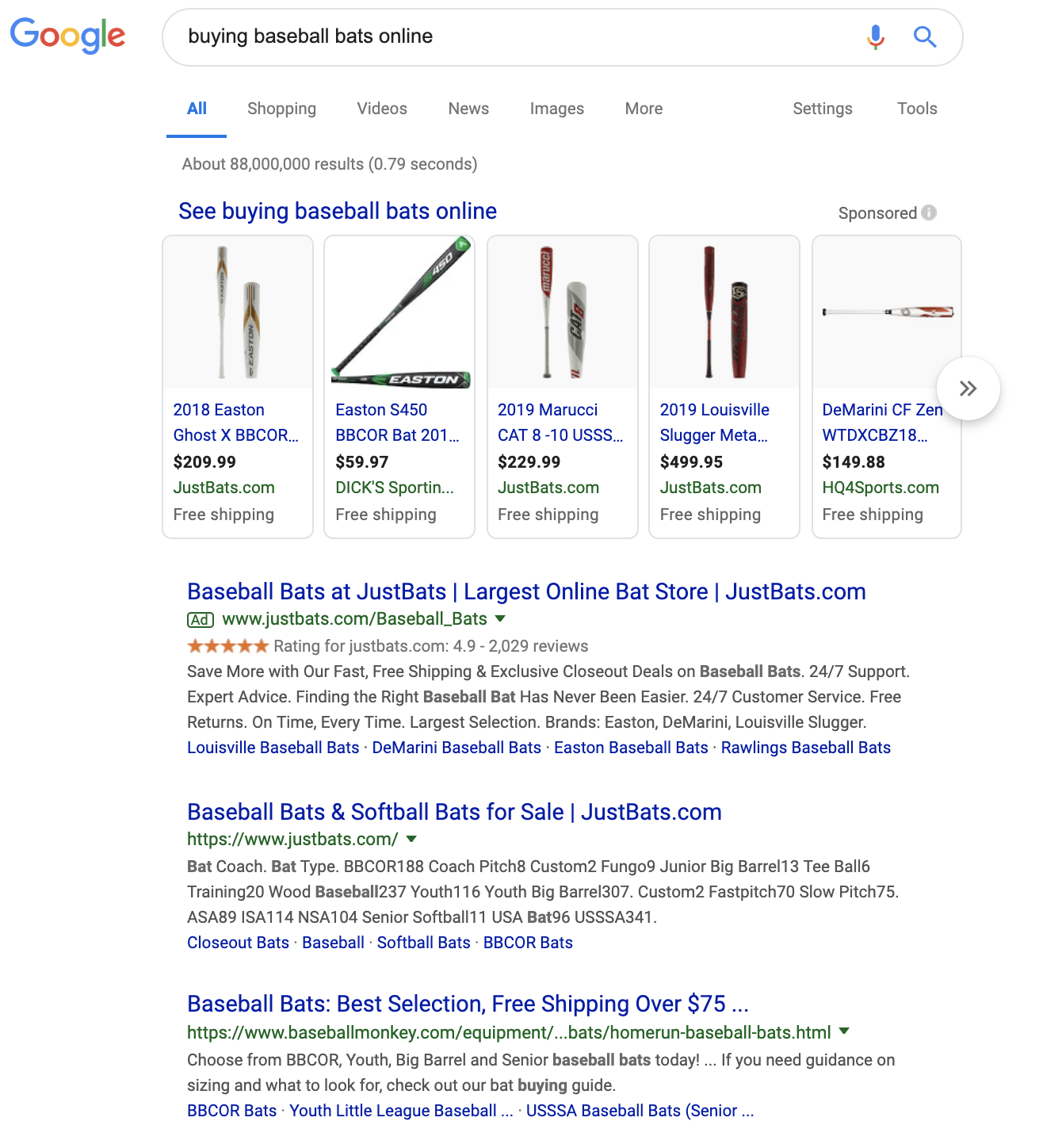
In our example of the baseball bat connoisseur, the first results on the SERP are ads (naturally). When a user is deciding on which link to click on, the listing should be relevant and appropriate for their needs.
According to Hubspot research, 75% of searchers never click past the first page. This means that your SERP listing should be well-optimized (with the standards above) and include the keywords you’re targeting. It should take into careful consideration what your audience’s intent is and match that with the copy.
For this query, the first organic listing mentions “Baseball bats and Softball Bats for Sale” which signals to a user that they will be able to purchase. However, the URL is set to the homepage. Once a user clicks they are presented with several categories of bats. While this presents them with the next course of action, it may also be an additional step that causes the searcher to bounce. CRO to the rescue.
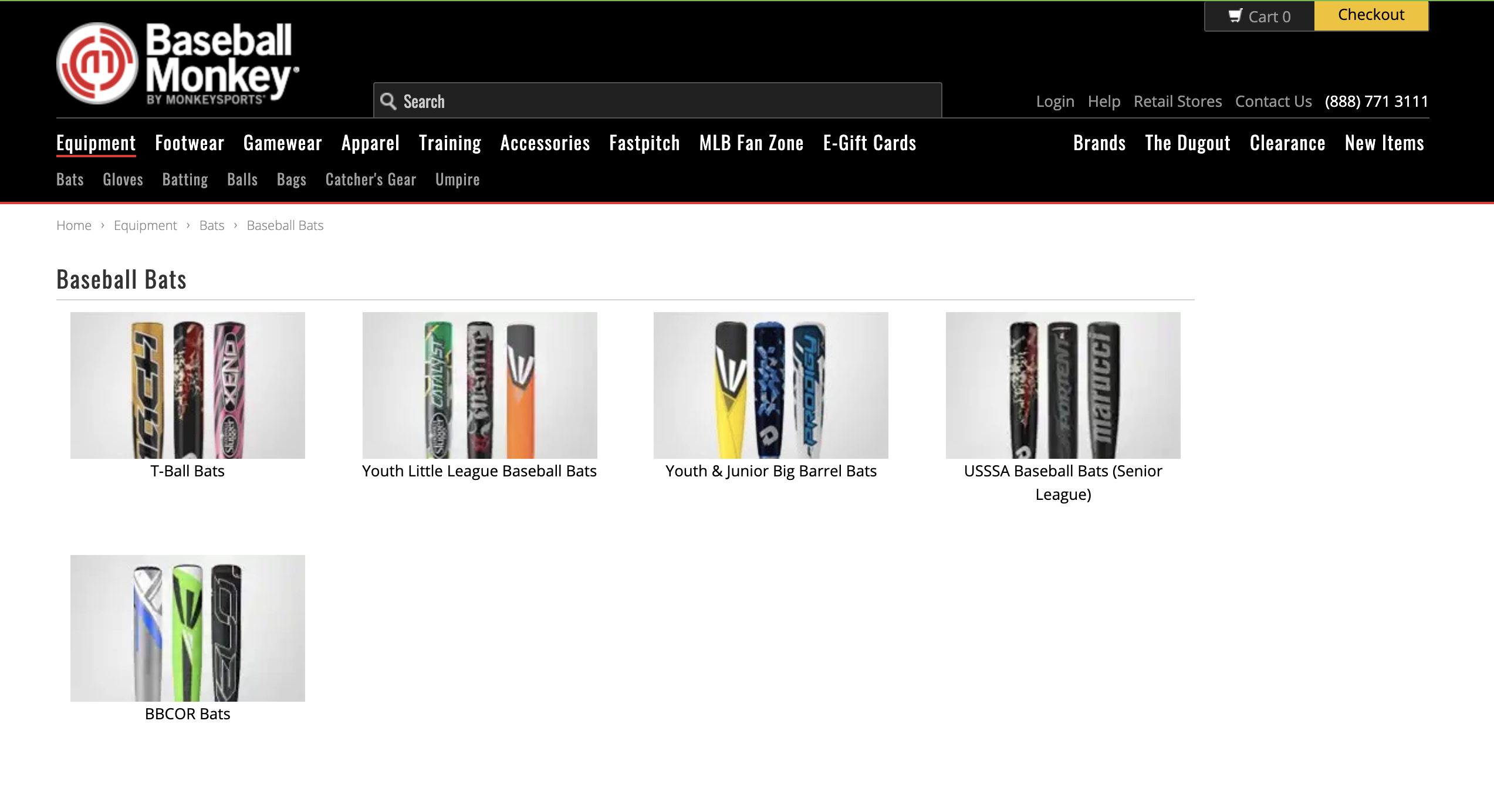
Let’s look at a more specific query of “best wooden baseball bat”. While the intent is unclear, we do know the user should be served with information on the best wooden baseball bat with the potential to convert.

Once you scroll past the ads and Rich Snippets content, the first listing is an article for the 6 Best 2018 Wood Bats from Justbats.com.
While this may seem like a miss from the sales side, from an SEO side the query matches the result and it even has timeliness on its side. The post list 2018 best wooden bats, not 2017 or all-time. Searchers know they will be getting relevant and of-the-moment information.
SEO has done its job. Now clicking through to the landing page, it would seem that this page is more informational. However, the CRO and the content team have joined forces to ensure that even a simple blog post can do the heavy lifting of conversion rate optimization.
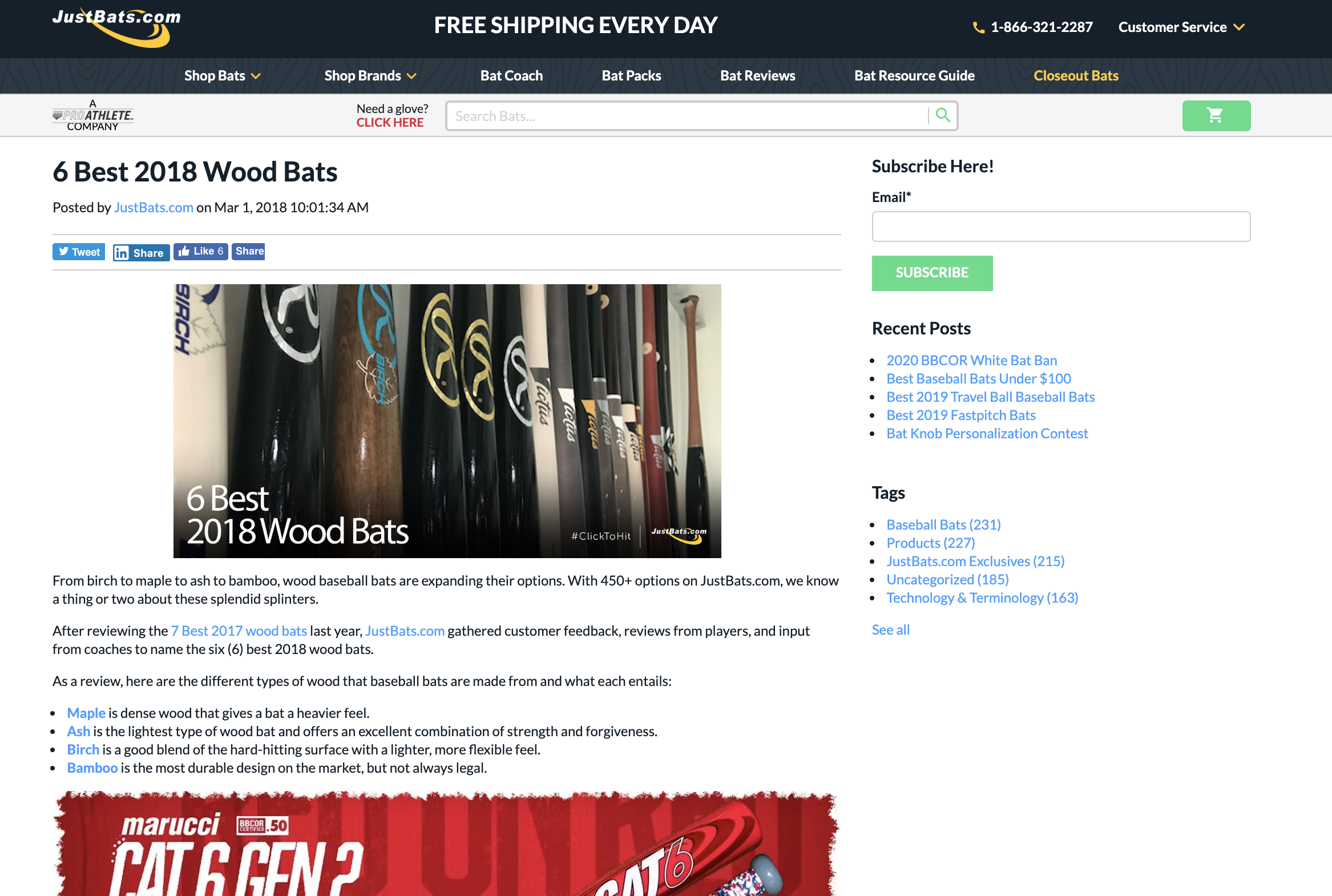
What looks like, at first read, a simple blog post in the 6 Best 2018 Wood Bats is actually a piece of sales collateral. With email opt-ins above the fold and clear navigation to shop, users can take several actions that will lead them to a conversion
Additionally, hyperlinks are included throughout the post to drive users to check out the recommended bats on the list. Each link leads to a product page on Justbats.com.
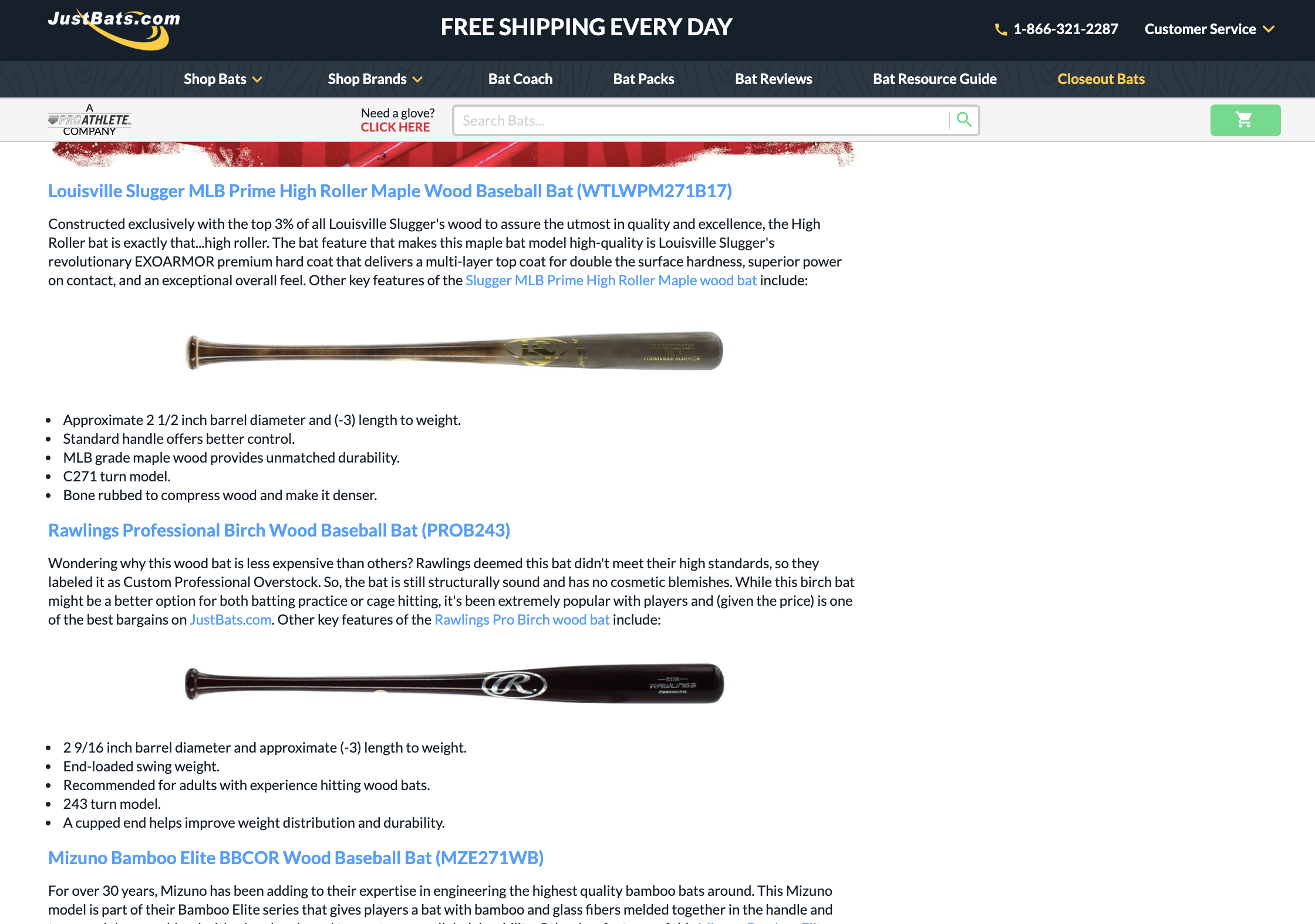
While we can specify and optimize pages for SEO, there are times when Google will serve its preferred page on your site. That does not mean that CRO work can not be done to drive organic traffic to take an action or send them deeper into your site.
Where to Start?
- Click-through rate (CTR) can also be a strong indicator of which pages of your site need CRO work. If your CTR is low, it’s likely your title tag and meta description are not engaging search users. Furthermore, if the bounce rate for that page is high, this shows that the messaging does not match the user’s intent and your conversion rate will be negatively affected.
- When a high percentage of users bounce from your site back to search results, you are losing a percentage of visitors that could convert and complete your desired action. For example, if your bounce rate is 45%, then you are left with 55% of search users that could potentially complete this action. Even if you have a strong conversion rate of 12%, since you are losing 45% of visitors immediately, you’re still losing 5.4% of visitors that could potentially convert.
- By improving the call-to-action on landing pages and better matching the search user intent in title tags and meta descriptions, you can decrease your bounce rate and increase the number of conversions your site receives. By creating content with both SEO and CRO in mind, brands can avoid pitfalls in both areas. This is where a solid content strategy that takes both search demand/interest and user experience into account will prove invaluable.
Hitting Your Conversions Out of the Park
Often, companies start with the intent to either increase their organic traffic or increase the number of organic visitors that convert. Where you start largely depends on your business’s unique needs at a given time. But whether you begin with SEO or tackle your conversion rate, you will ultimately need both efforts to build a unified marketing effort.
In other words, you need to pay attention to the entire conversion funnel, SEO, and CRO marketing levers throughout and connect the user with highly targeted content, keyword optimization, and a clear and easy path to take the desired next steps.
Need expert help with SEO strategy and CRO? Contact Us!
How have to connected SEO and CRO together? What tools do you use to test messaging and optimize landing pages?



